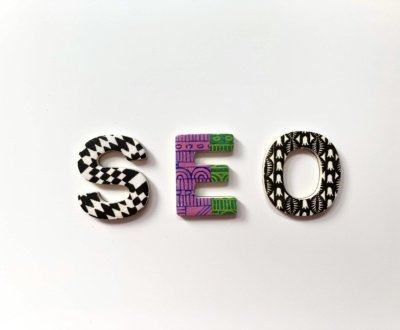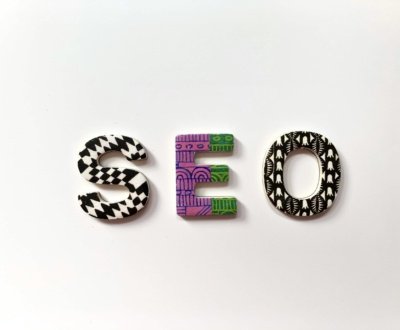Internal linking is a crucial aspect of SEO that significantly impacts a website’s search engine rankings and overall user experience. By understanding why internal links are important for SEO and implementing effective strategies, you can improve your site’s visibility, navigation, and engagement. This comprehensive guide will explore everything you need to know about internal linking for SEO.
Understanding Internal Linking
Definition of Internal Linking
Internal linking refers to the practice of linking one page of a website to another page within the same domain. These links help users navigate through the site and assist search engines in understanding the site’s structure and content hierarchy.
Benefits of Internal Linking
- Improved Site Navigation: Helps users easily find relevant content.
- Enhanced SEO: Distributes page authority and ranking potential across the site.
- Increased Page Views: Encourages visitors to explore more pages, reducing bounce rates.

Why Are Internal Links Important for SEO?
Enhancing Site Structure
Internal links create a coherent structure that search engines use to crawl and index your site more efficiently. This structure helps search engines understand the relationship between different pages and the overall content of your site.
Improving User Experience
Internal links guide users to related content, enhancing their experience and encouraging them to spend more time on your site. This increased engagement can lead to higher rankings and better conversion rates.
Facilitating Crawling and Indexing
Search engine bots use internal links to discover new content and understand the context of pages. Well-structured internal links ensure that all important pages are crawled and indexed.
Benefits of Internal Linking
Boosting SEO
Internal links help distribute link equity (ranking power) across your site, ensuring that important pages receive the attention they deserve. This distribution can improve the overall SEO performance of your site.
Improving Navigation
By linking to related content, you can create a seamless navigation experience for users, making it easier for them to find what they are looking for.
Increasing Page Views
Internal links encourage visitors to explore more content, leading to increased page views and a lower bounce rate. This behavior signals to search engines that your site is valuable and engaging.
How to Build Internal Links for SEO
Strategies for Effective Internal Linking
- Content Hubs: Group related content together to create a hub of information.
- Silo Structure: Organize content into themed sections to improve relevancy and structure.
- Topic Clusters: Use pillar pages and cluster content to create a network of related articles.
Tools for Building Internal Links
- Google Search Console: Monitor and manage your internal linking strategy.
- Ahrefs: Analyze internal links and identify opportunities for improvement.
- Moz: Track internal linking performance and make data-driven decisions.
Types of Internal Links
Contextual Links
Embedded within the content, these links provide additional information and context to the reader, enhancing their understanding of the topic.
Navigational Links
Found in the website’s main navigation menu, these links help users find major sections and important pages quickly.
Footer Links
Placed in the website’s footer, these links often include important pages such as contact information, privacy policy, and terms of service.

Best Practices for Internal Linking
Optimizing Anchor Text
Use descriptive and relevant anchor text that gives users and search engines an idea of what the linked page is about. Avoid generic terms like “click here.”
Maintaining Link Depth
Ensure that important pages are no more than three clicks away from the homepage. This practice makes it easier for search engines to crawl and index these pages.
Ensuring Relevance
Link to pages that are contextually related to the content. Irrelevant links can confuse users and dilute the SEO value of your links.
Internal Linking vs. External Linking
Differences
- Internal Links: Connect pages within the same website.
- External Links: Connect to pages on different websites.
Benefits
- Internal Links: Improve site structure, SEO, and user experience.
- External Links: Build authority, credibility, and relationships with other sites.
Strategies
- Internal Links: Focus on relevant content, optimize anchor text, and maintain a logical structure.
- External Links: Link to authoritative sources, ensure relevance, and avoid over-linking.
Common Mistakes in Internal Linking
Overlinking
Including too many internal links on a single page can overwhelm users and reduce the value of each link. Aim for a balanced approach.
Broken Links
Regularly check for and fix broken links, as they can negatively impact user experience and SEO.
Irrelevant Links
Linking to unrelated content can confuse users and dilute the SEO value of your internal links. Ensure that all internal links are contextually relevant.
Tools for Internal Linking Analysis
Google Search Console
Provides insights into your internal linking structure and identifies potential issues.
Ahrefs
Offers a detailed analysis of your internal links, highlighting opportunities for improvement.
Moz
Tracks the performance of your internal links and provides recommendations for optimization.
Internal Linking Strategies
Content Hubs
Create a central page that links to related articles and resources, providing a comprehensive guide on a specific topic.
Silo Structure
Organize your content into themed sections, making it easier for users and search engines to navigate.
Topic Clusters
Use pillar pages to cover broad topics and link to more detailed articles within the same theme, creating a network of related content.

How to Monitor Internal Links
Using Analytics
Leverage tools like Google Analytics to track user behavior and identify popular internal links.
Webmaster Tools
Utilize webmaster tools to monitor internal linking performance and identify areas for improvement.
Case Studies of Effective Internal Linking
Success Stories
Examine real-world examples of websites that have successfully implemented internal linking strategies to boost their SEO and user engagement.
Real-World Examples
Analyze how top-performing websites use internal links to improve site structure, navigation, and SEO.
SEO Link Building
Integrating Internal and External Links
Combine internal and external linking strategies to build a comprehensive SEO link-building plan. This approach maximizes the benefits of both types of links.
Impact of Internal Links on User Experience
Navigability
Internal links enhance site navigability, making it easier for users to find relevant content.
Engagement
By linking to related articles and resources, you can keep users engaged and encourage them to spend more time on your site.
Session Duration
Effective internal linking can increase the average session duration, signaling to search engines that your site provides valuable content.
Anchor Text Optimization
Keywords
Use relevant keywords in your anchor text to help search engines understand the context of the linked page.

Natural Language
Ensure that anchor text flows naturally within the content, providing a seamless reading experience.
Variations
Use different variations of anchor text to avoid over-optimization and provide a more natural linking profile.

Digital Marketing for Financial Advisors
Internal Linking for E-commerce Sites
Product Pages
Link to related products and categories to enhance the shopping experience and increase cross-selling opportunities.
Category Pages
Organize products into categories and subcategories, linking them to improve navigation and SEO.
Related Products
Use internal links to suggest related products, encouraging users to explore more options.
The Role of Internal Links in Content Marketing
Connecting Articles
Link related articles and blog posts to create a network of interconnected content.
Blog Posts
Use internal links within blog posts to guide readers to additional information and resources.
Resources
Link to relevant resources and guides to provide comprehensive information on a topic.
Technical SEO Considerations
Site Architecture
Design a logical site architecture that supports effective internal linking and improves crawlability.
Crawl Budget
Optimize internal linking to ensure that search engine bots efficiently crawl and index your site.
Indexing
Use internal links to help search engines discover and index new content quickly.
Internal Links and Mobile SEO
Mobile Usability
Ensure that internal links are easily accessible and usable on mobile devices.
Responsiveness
Design a responsive site that adapts to different screen sizes and provides a seamless linking experience.
User Experience
Optimize internal links for mobile users to enhance navigation and engagement.
Future Trends in Internal Linking
AI and Automation
Leverage AI and automation tools to optimize internal linking strategies and improve efficiency.
Predictive Linking
Use predictive linking to anticipate user behavior and provide relevant content recommendations.
Internal Linking Audit
Steps for an Audit
Conduct a thorough internal linking audit to identify issues and opportunities for improvement.
Tools
Utilize tools like Google Search Console, Ahrefs, and Moz to analyze your internal linking structure.
Key Metrics
Track key metrics such as link equity, crawlability, and user engagement to assess the effectiveness of your internal linking strategy.
Internal Linking for New Websites
Initial Setup
Plan your internal linking structure from the outset to ensure a strong foundation for SEO.
Content Planning
Create a content plan that includes strategic internal links to guide users and search engines.
Growth Strategies
Implement growth strategies that leverage internal linking to enhance site visibility and user engagement.
Improving Internal Linking Through UX Design
Design Elements
Incorporate design elements that highlight internal links and make them easily accessible to users.
Layout
Use a clear and logical layout that supports effective internal linking and improves navigation.
Navigation
Design intuitive navigation menus and structures that facilitate internal linking and enhance user experience.

SEO Metrics Affected by Internal Links
Bounce Rate
Effective internal linking can reduce bounce rate by encouraging users to explore more content.
Dwell Time
Increase dwell time by linking to relevant and engaging content, keeping users on your site longer.
Conversion Rate
Improve conversion rates by guiding users to important pages and resources through strategic internal links.
Internal Linking and Content Strategy
Aligning Links with Content Goals
Ensure that your internal linking strategy aligns with your overall content goals and objectives.
Content Goals
Use internal links to support content goals such as increasing engagement, driving traffic, and improving SEO.
Building an Internal Linking Plan
Steps to Create a Plan
Develop a comprehensive internal linking plan that outlines strategies, timelines, and execution steps.
Timelines
Set realistic timelines for implementing and monitoring your internal linking strategy.
Execution
Execute your internal linking plan systematically to ensure consistency and effectiveness.
About us and this blog
We are a digital marketing company with a focus on helping our customers achieve great results across several key areas.
Request a free quote
We offer professional SEO services that help websites increase their organic search score drastically in order to compete for the highest rankings even when it comes to highly competitive keywords.




